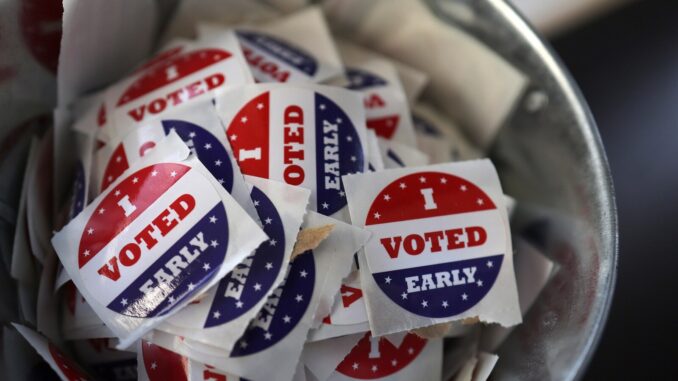
MINNEAPOLIS — The Minnesota Supreme Court has ordered election officials in the state’s most populous county to go back to a list submitted by the state’s Republican Party and pick new members for a board that validates absentee ballots.
In an order handed down late Tuesday, the court said officials in Hennepin County — home to Minneapolis and many of its suburbs — had a duty to appoint election judges off the party’s list before letting cities pick from it and exhaust the number of people available. The court gave the county until Friday to comply.
Until now the county absentee ballot board had been filled by four Democrats and one Republican.
Minnesota began in-person early voting and absentee balloting on Sept. 20. Tuesday’s Supreme Court order, signed by Chief Justice Natalie Hudson, did not invalidate any of the more than 263,000 absentee ballots the county already received. More than 209,000 of those ballots have been accepted by the current review board.
The Republican Party of Minnesota and an allied group, the Minnesota Voters Alliance, petitioned the court to intervene after determining that nobody on the Republican Party list of more than 1,500 volunteers had been appointed to Hennepin County’s absentee ballot board. The volunteers were drawn from counties statewide and their names submitted to the Secretary of State’s Office earlier this year. The Democratic Party in Minnesota submitted its own list to the office, and election judges are supposed to be selected from both parties’ rosters.
The absentee ballot board is made up of five election judges and several deputy county auditors. Hennepin County officials said in a court filing that 40 of the 45 cities across the county appoint their own election judges and have their own absentee ballot boards.
County officials said the localities exhausted the list of available election judges before Hennepin County could fill its own absentee ballot board. The county had over 6,000 election judge positions to fill. They said they used the authority they believed they had under state law to name board members who weren’t on the list submitted to the Secretary of State’s Office.
Secretary of State Steve Simon argued in a court filing that the county had complied with state law, but the Supreme Court disagreed. It said the county must start with names submitted by the political parties to fill ballot board seats, though its order did not specifically say how many Republicans or how many Democrats should be appointed.
According to the county’s filing, the absentee ballot board processes and counts all absentee ballots submitted through the U.S. mail, via in-person absentee voting at the county courthouse in Minneapolis, or submitted to one of the communities that lack their own board.
State GOP chair David Hann called Tuesday’s court decision “a huge win for election integrity in Minnesota” and said all counties should be on notice.
“The Court’s order made clear that there is no ambiguity in the law — Hennepin County cannot bypass the Party’s list of election judges,” Hann said in a statement.
Hennepin County Auditor Daniel Rogan said in a statement that the county would send emails to individuals on the list Thursday to recruit election judges for the absentee ballot board. He said the Supreme Court ruling was made on narrow grounds, and pointed out that the court recognized that the board was operating with sufficient party balance as required by state law.
Hann and other Republicans said at a news conference earlier this month that they knew of no other counties that had failed to comply with the proper process in filling absentee ballot boards, but that they weren’t ruling out the possibility of problems elsewhere. They said they started by looking at Hennepin County because of its size.
Hennepin County elections officials had already come under criticism after a private courier’s vehicle picking up absentee ballots from several communities was left unattended with the trunk open outside Edina City Hall for several minutes earlier this month. The county said security video showed that nobody tampered with the sealed ballot cases inside, that all of the ballots had been accounted for, and that no new ballots had been slipped in.
The courier company fired the driver.


Be the first to comment